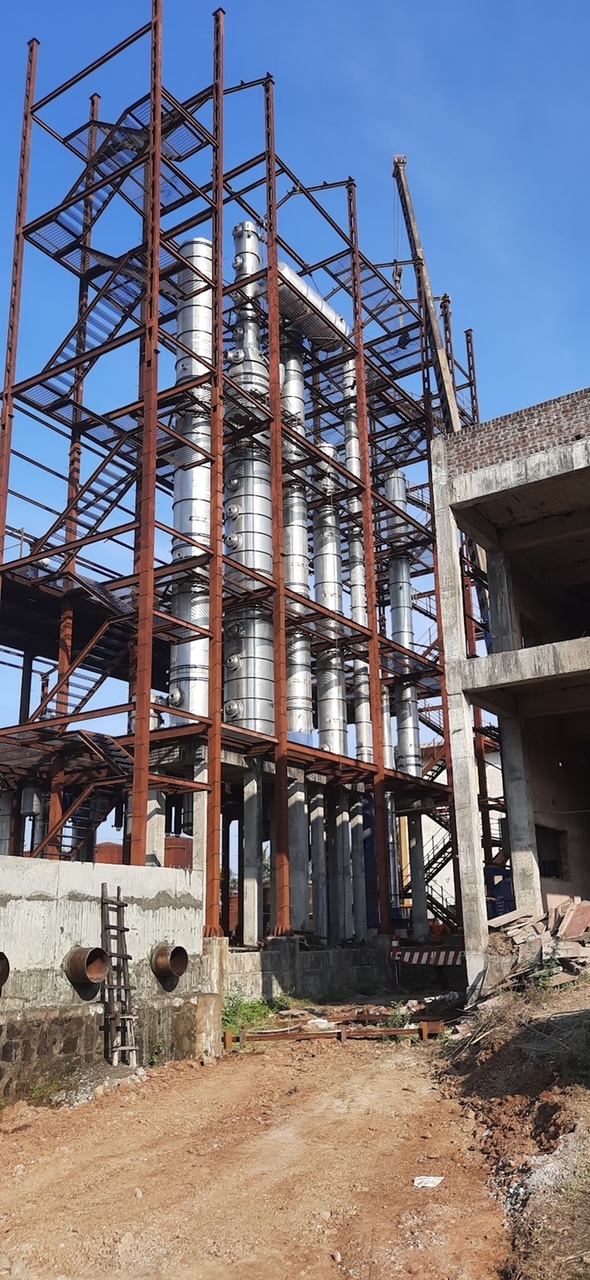Analysis: What is the Current State of the Ethanol Industry?

Union Cooperation Minister Amit Shah, who is on a visit to Pune, has assured that all the sugar factories in the state should produce ethanol and the central government will help ethanol projects. Against that backdrop, a review of the ethanol industry in the state…
What is the state of ethanol industry in the country?
In 1992, when the country was in economic trouble, the central government adopted the policy of producing ethanol from crops and mixing the produced ethanol with petrol and using it as fuel. After that, Petroleum Minister Ram Naik in the Atal Bihari Vajpayee government at the Center took the initiative and made a law in this regard. It was decided to mix five percent ethanol in petrol. Till 2014, the ethanol production capacity of the country was 215 crore litres. It has increased by 811 crore liters in the last nine years. The production capacity of grain-based ethanol production plants in the country was 206 crore liters in 2013, which has now increased to 433 crore litres. The rest of the ethanol is produced by sugar mills. Now the total ethanol production capacity of the country has gone up to 1244 crore litres. Ethanol plants in the country have supplied more than 310 crore liters of ethanol to oil companies till June 11.
What is the subsidy policy for ethanol projects?
In order to increase the production of ethanol in the country, loans are provided by the Center at subsidized interest rates. Loans are given for construction of new projects and expansion of existing projects. This loan was to be disbursed by the end of March 2023, it will now be disbursed by 30 September. Apart from this, the central government has brought down the GST on ethanol to five percent. Earlier, state-owned oil producing companies had to pay 5 percent GST on ethanol sales, while private companies had to pay 18 percent GST. This GST has been reduced to five percent. Ethanol produced from sugarcane juice, sugarcane and degraded sugar is called ‘One G’. Ethanol can be produced from bagasse, stick waste, municipal waste, sewage water, all decaying matter, it is called ‘Too G’. The Central Government’s policy is to promote ‘Two G’ ethanol production in the country. Under the Biofuels Policy 2018, production of ethanol from various crops was allowed. Production of ethanol from spoiled rice, maize, rice, wheat etc. is allowed and such industries have started growing in the states of Punjab and Odisha. The number of ethanol projects associated with sugar mills in Uttar Pradesh is increasing rapidly. In the financial year 2021-22, a total of 433.6 crore liters of ethanol was blended into petrol in the country. For that, the oil companies have given about 25,750 crores to the ethanol industry. Sugar industry has a major share in it. 6 crore liters of ethanol were mixed with petrol. For that, the oil companies have given about 25,750 crores to the ethanol industry. Sugar industry has a major share in it. 6 crore liters of ethanol were mixed with petrol. For that, the oil companies have given about 25,750 crores to the ethanol industry. Sugar industry has a major share in it.
What is the status of ethanol mixture in petrol?
In 2013-14, 38 crore liters of ethanol was supplied to oil companies. The admixture level was 1.53 percent. By 2020-21, ethanol production, supply has increased eightfold. 408 crore liters of ethanol production in 2020-21, while 10.02 percent blending level was achieved. As of June 11, 2023, ethanol production has gone up to 310 crore litres, with a blending level of 11.70 percent. Aiming to take the blending level to 25 percent by 2025, the ethanol production capacity needs to be increased to 1700 crore litres. The central government has implemented new rates from the ‘Ethanol Supply Year’ starting from December 2022. Ethanol produced from sugarcane juice is currently fetching Rs 65.60. Ethanol produced from B heavy molasses is currently fetching Rs 60.73. Ethanol produced from C heavy molasses fetches Rs 49.40.
What is the status of ethanol industry in the state?
128 factories and 69 Aswani plants are permitted to produce ethanol in the state. An average of 140 crore ethanol is likely to be produced in the state this year. Assuming an average second-order tariff (60.73 ), the state will earn around Rs 8,500 crore from ethanol sales. The factories will get about Rs. 280 crore more due to the increased rate. Farmers will surely benefit from this increased economic income. This year, the central government has approved the projects of 125 cooperative and private factories costing Rs. 10,711 crore. Along with this, the Center has sanctioned 141 molasses and grain based projects worth Rs 10,660 crore. Loans will be given for these projects at an interest rate of six percent. The total annual ethanol production capacity of 122 projects in the state is 42 cooperative, 42 private and 38 stand alone ethanol plants.
Will sugar production decrease due to ethanol?
The hike in ethanol prices by the central government is certainly a financial boost to farmers and sugar mills. The factories have to deliver the produced ethanol to the designated point by the petroleum companies. Factories do not get that much of the actual transportation cost for that. Therefore, the President of National Cooperative Sugar Factory Federation, Jayaprakash Dandegaonkar has expressed the opinion that if the factories want to get the actual transportation cost announced by the Central Government, the factories should get it. Ethanol production is likely to increase further next year. According to the Parliamentary Estimates Committee, 4.1 lakh tonnes of sugar was used for ethanol production this year. Next year, 45 lakh tonnes of sugar can be used for ethanol production. This year 320.8 lakh tonnes of sugar was produced. Sugar production may decrease by 3.41 percent to 310.60 lakh tonnes due to increase in ethanol production.
















